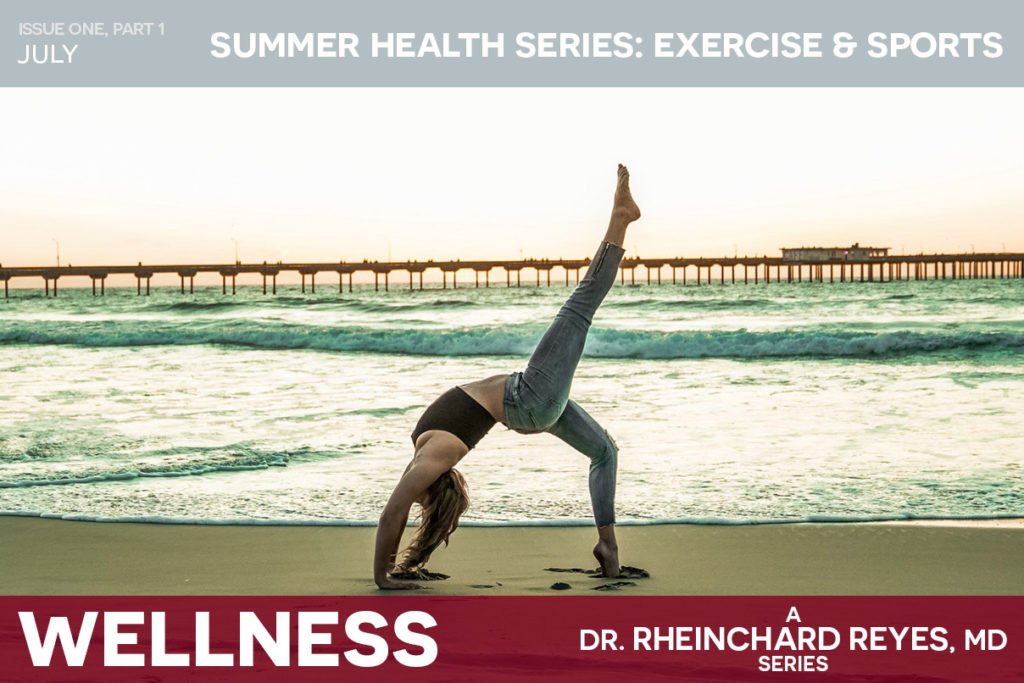In line with the prior three-part nutrition myths entry to this blog, this post exposes certain sports and fitness myths for what they are, in the hope that they might be immediately helpful or lead to further research if you are having doubts. Same as eating healthful foods is convenient to nutrition and general well-being–what the heck, it’s necessary!
So, let’s start by listing some sports practice myths and top it off with exercising recommendations, as laid down by the American Health Organization.
Mythbusting the Fitness World
-
Exercise does not negatively impact pregnancy.
-
Stretching is a far better idea once muscles have already warmed up. So… warm-up first, stretch, then exercise. And then, stretch again. This seems to be the consensus on the best pattern overall.
-
Strong evidence suggests that stretching does not reduce the risk of injury.
-
No pain, no gain is a dangerous lie. It could prove masochistic and hurtful, even. The only real reason you may be feeling pain after working out is because of injury. Another thing altogether is muscular or physical discomfort due to strain, which is a reasonable after effect sometimes if you have exercised hard, maybe overdone it, if you are working through a previous injury or if you are at the beginning of a cycle and using new muscles. If you feel bona fide pain, the best advice is stop.
-
Crunches do not get rid of belly fat. Spot reducing is one big fat myth. Working out to lose weight or fat definitely works, but the loss is generalized not focalized. In fact, the bent-leg sit-up is probably a better exercise for belly and abdominal toning altogether.
-
Some “experts” believe that no sweat means you’re not working hard enough and, thus, no gain. Another myth. Sweating depends on so many personal factors, like your metabolism, your body weight… and, of course, how much you’re actually working. Can you tell of you are sweating if your exercise of choice is swimming? Sweating profusely can raise as many flags and be a source of issues like dehydration or a hike in blood pressure.
-
You are never too old to exercise or to pick up new skills. Don’t be fooled, there are many upsides to staying active or picking up a new physical activity to stay in shape or improve your overall condition. Of course, depending on your age, strenuous efforts might not be the best course of action.
-
A fitness program or app is not a vital tool. These things speak more to the organizational or commitment side of you, than to the real need for one. Evidently, if you are a full-on athlete that may not be the case, but if exercising regularly, as any ordinary person would do to stay fit and healthy, is your vessel to a better life, you actually do not need a fitness program. Instead, willpower is the most interesting and valuable resource.
-
Health is mental, physical and social wellbeing combined with the absence of disease. Activity (as in physical) is the movement of the body by means of skeletal muscles that generates energy expenditure. Fitness is an attribute (or a set of conditions) that people achieve or have to perform an activity. It is highly important to note that these three things are separate terms and realities and not interchangeable
-
Finally, more is not always better. As you probably have heard in other areas in your life, the actual quality of what you do and the process, the what and the how, are far more important to your general wellbeing.
And this specifically leads us straight to the American Health Organization recommendations for daily exercise. Keep them in mind!
Adults need to do at least 150 minutes (2.5 hours) weekly of moderate aerobic activity intensity or 75 minutes of high intensity exercise, preferably spread throughout the week.
Sources:
https://www.mdedge.com/obgyn/article/138888/rheumatology/experts-bust-common-sports-medicine-myths
https://www.everydayhealth.com/fitness-pictures/separating-fitness-fact-from-fiction.aspx
http://www.oocities.org/fit_ateneans/text_introduction.htm
https://8fit.com/lifestyle/fitness-myths-debunked-sport-and-exercise-science/
http://www.projecthealthykidsnig.com/index.php/The-Truth/myths-about-physical-activities.html
https://www.who.int/dietphysicalactivity/factsheet_myths/en/
https://www.acc.co.nz/newsroom/stories/one-myth-about-sport-every-parent-should-know/
https://www.open.edu/openlearn/health-sports-psychology/sport-fitness/active-healthy-lifestyles/content-section-1


